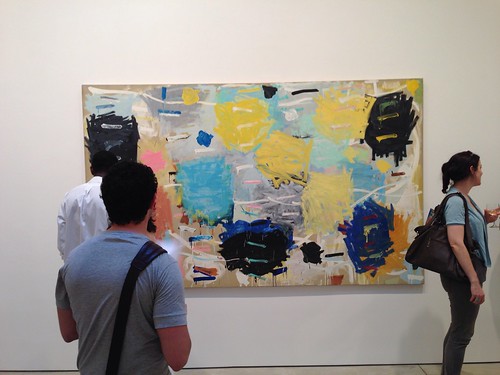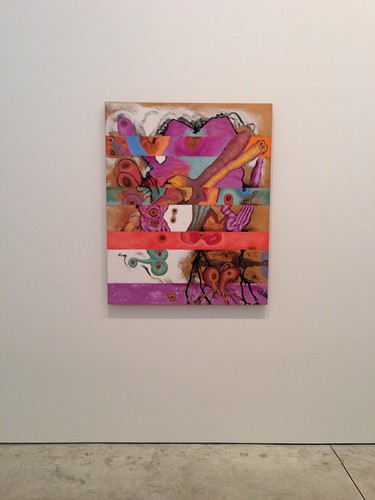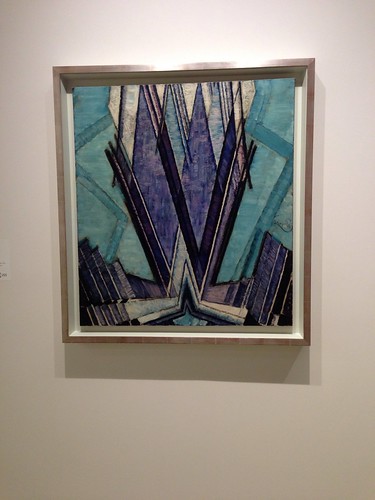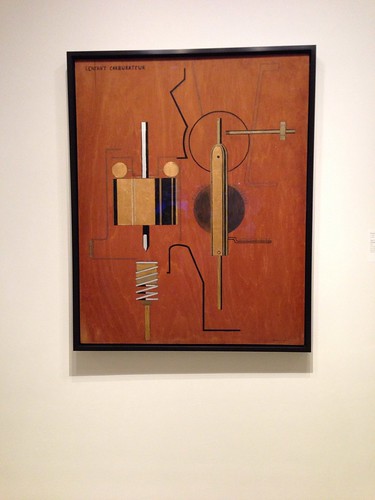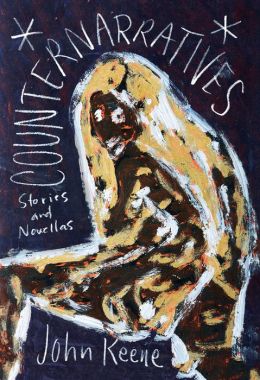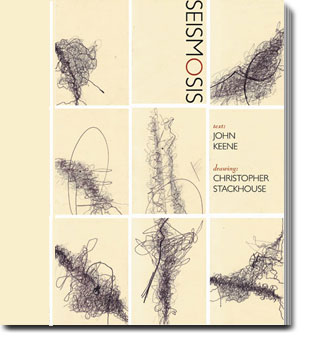 |
Hirst's "Urea-13C"
Gagosian Gallery
(Librado Romero/New York Times) |
Two autumns ago as part of a colloquium sponsored by the
California Institute of the Arts I gave a talk on poetry, money and society at the
Museum of Contemporary Art in
Los Angeles in which I cited
Damien Hirst's infamous
diamond-encrusted skull, "For The Love of God," as emblematic of the logic of capitalist aesthetics. He (and a few others, including the
Black-Eyed Peas, for example) was, to my mind, taking a particular articulation of Western aesthetics and aestheticism, informed by post-industrial capitalism, the commodification process and neoliberalism, to its end, at the very moment that capitalism itself was globally imploding. In fact, his artistic trajectory and triumphs were both the symbols and embodiments of that implosion. Not that I was exactly denouncing him, since I both find his work hollow and often mindless while also thinking his overall approach to art and particular pieces fascinating, but in any case I wasn't the first to critique Hirst, and anyways, who gives a damn what I think?
He's rich, b****! as
Dave Chappelle, channeling
Rick James, would say, and people far richer than
Hirst, like his former collector
Maurice Saatchi and his dealer
Larry Gagosian, as well as countless connoisseurs who could afford to offer emperors' ransoms to purchase his "art," are the ones who have the last say in his regard. And they are still testifying on his behalf. That said, Hirst's detractors include the likes of the great
Anglo-American artist
David Hockney,
who recently critiqued Hirst's use of assistants to create his art. When I read Hockney's criticism, I thought, well he must know that there's a long tradition of assistants in the Western and other traditions, and the authenticity fetish of the individual artist's craftmanship went out the window with
Marcel Duchamp, but still...Hirst does get under people's skins. (In case you are in
London, Hockney's remarkable recent paintings are on display until April 9, 2012, at the
Royal Academy.)
 |
Hockney's "Winter Timber" (2009)
at the Royal Academy
(Guardian Online) |
He also has more life in him than 1,000 cats, it seems. After
the critical debacle of his 2009
"return to painting" a few years ago at the
Wallace Collection, he is back with
a spectacle of a show, or shows, that would make even his most famous peers flush with envy. I say show or shows because one can think of the Gagosian Gallery's multiple-site exhibit of Hirst's work as one collective show or several running in parallel, but all appear to be showing variations not just on the same theme, but the same work itself: his banal "spot" paintings. I see these paintings and I think, this is an art student's quick insight (or post-
LeWittian or
Buren-esque hangover), wallpaper for a child's bed or romper room, charming-the-first-time-through gift wrap, the not-very-interesting results of a simple computer algorithm, glorified and blown up into a mini-industry, which is to say, I regard them both with condemnation and simultaneously admiration for Hirst's cleverness, audaciousness and chutzpah. One gallery full of these paintings really ought to have been enough; then you could acknowledge their decorative and simplistic aspects while noting that even if a small child, with no grasp of abstract or conceptual art, had thought of this, it would still be worth viewing. Variations on a theme! Play with scale! Abstraction rebirth after the return of figurative painting! Conceptualism's delights! And, certainly,
color! But
ELEVEN galleries, featuring 331 paintings across the globe? Really?
Really? The response is something C and I often say: "And why not?"
Roberta Smith, writing of the
New York shows in her
New York Times review,
"Hirst, Globally Dotting His 'I'," did not hesitate to say that some of these paintings were "bad." How could she not and still possess any integrity? Full quote: "Well, very bad at times, and yet, at others, not bad at all, in fact rather good." Rather good: for some of Hirst's specific pieces, and the spectacle itself, exert a fascination, and sometimes achieve what could be described as beauty. (Were the 11 galleries in the vicinity of each other, one might even talk of their approximating a kind of anti-
sublime.) But, as she says, too many galleries full of this stuff goes too far. It got me thinking that it might have been far more interesting and conceptually profound had Hirst, instead of filling the Gagosian galleries with this guff, decided to
wrap one of the buildings housing one of the galleries, or perhaps another New York landmark--the
Washington Square Arch, the
Empire State Building, the
Statue of Liberty, the
Woolworth Building,
Pennsylvania Station and
Madison Square Garden, etc., with a patented, stretchable version of his "spot"-painting. Or even if he'd just paid people to wear Hirst-spot clothing for a week, and stand in various places, à la
Vanessa Beecroft, looking chic and entitled. A true outrage, on the level of what the 1999
Sensation Show at the
Brooklyn Museum--which I saw, with a gang of friends who were motivated to check it out mainly because of the uproar--would have been for him to design tents, cold-weather outfits, even survival implements, for
Occupy protesters, and underwrite Hirst-spot plates, cutlery, sheets and warm bedspreads for the numerous soup kitchens and shelters around the
US and
UK providing nightly meals and lodgings for the many homeless people desperately struggling to make it through to the next day. Just imagine the brouhaha...and praise....
 |
"Moxalactam," "L-Isoleucinal,"
"Cefatrizine Propylene" and “1-Hexadecene"
Gagosian Gallery
(Librado Romero/New York Times) |
But alas, we instead have the prospect of acres of spots and dots, large and small, painted, impastoed, screened, crowding white canvases, crowning white walls. And Hirst, blathering on about what it is he does, or doesn't, including growing old,
chats about it all with Anthony Haden-Guest, the journalist and socialite. Whatever he does or doesn't, one thing is certain: pounds and dollars keep lining his pockets. And if there is anything that gins up the interest of (many) Americans, and Britons, that's it. As I have said before, genius sometimes lies just on this side of charlatanry....


































